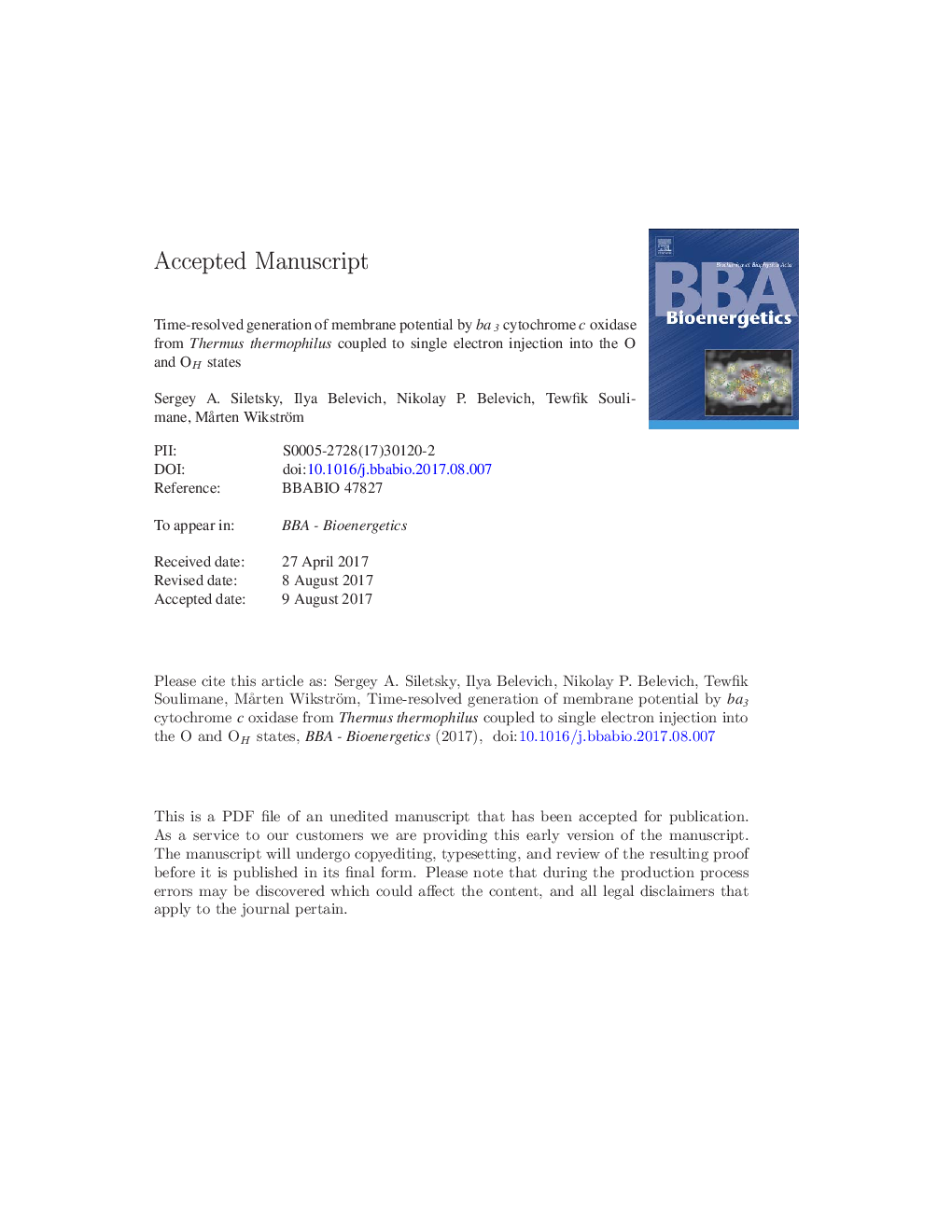| Article ID | Journal | Published Year | Pages | File Type |
|---|---|---|---|---|
| 5507155 | Biochimica et Biophysica Acta (BBA) - Bioenergetics | 2017 | 47 Pages |
Abstract
Two electrogenic phases with characteristic times of ~ 14 μs and ~ 290 μs are resolved in the kinetics of membrane potential generation coupled to single-electron reduction of the oxidized “relaxed” O state of ba3 oxidase from T. thermophilus (O â E transition). The rapid phase reflects electron redistribution between CuA and heme b. The slow phase includes electron redistribution from both CuA and heme b to heme a3, and electrogenic proton transfer coupled to reduction of heme a3. The distance of proton translocation corresponds to uptake of a proton from the inner water phase into the binuclear center where heme a3 is reduced, but there is no proton pumping and no reduction of CuB. Single-electron reduction of the oxidized “unrelaxed” state (OH â EH transition) is accompanied by electrogenic reduction of the heme b/heme a3 pair by CuA in a “fast” phase (~ 22 μs) and transfer of protons in “middle” and “slow” electrogenic phases (~ 0.185 ms and ~ 0.78 ms) coupled to electron redistribution from the heme b/heme a3 pair to the CuB site. The “middle” and “slow” electrogenic phases seem to be associated with transfer of protons to the proton-loading site (PLS) of the proton pump, but when all injected electrons reach CuB the electronic charge appears to be compensated by back-leakage of the protons from the PLS into the binuclear site. Thus proton pumping occurs only to the extent of ~ 0.1 H+/eâ, probably due to the formed membrane potential in the experiment.
Keywords
Related Topics
Life Sciences
Agricultural and Biological Sciences
Plant Science
Authors
Sergey A. Siletsky, Ilya Belevich, Nikolai P. Belevich, Tewfik Soulimane, MÃ¥rten Wikström,
